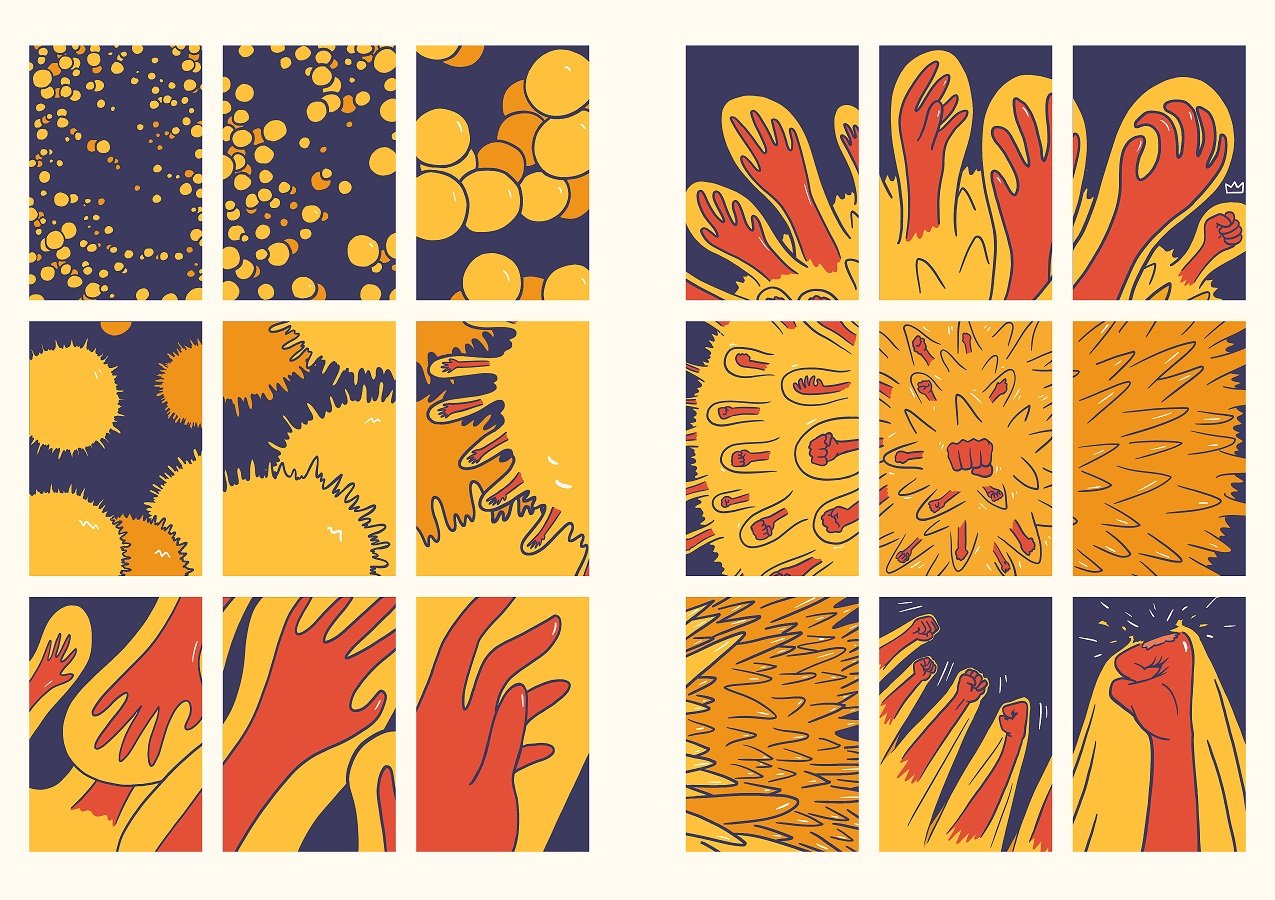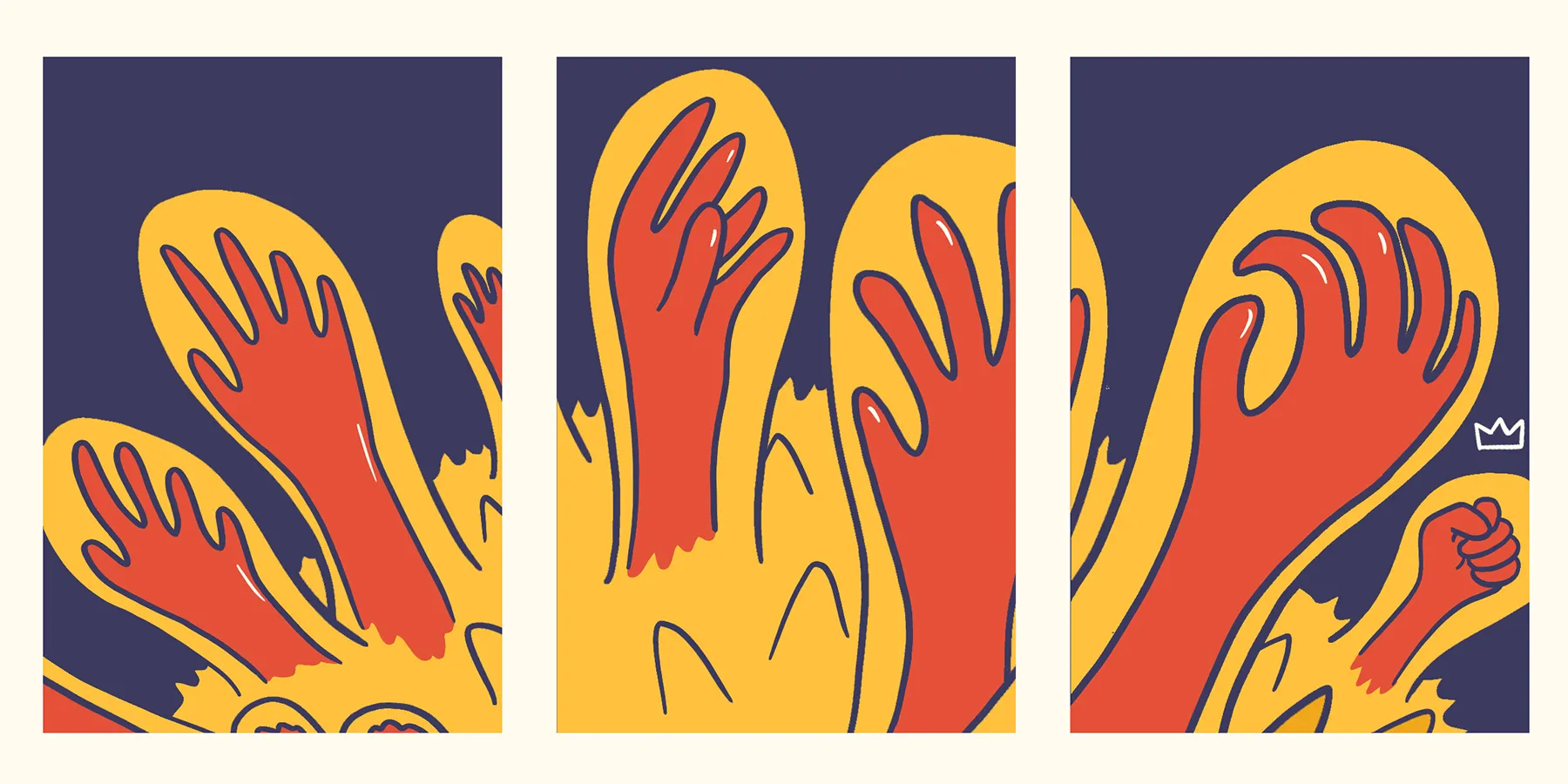Abstract
In isolation, we are physically apart; in solidarity, we are together. The COVID-19 pandemic emphasizes our social responsibility to maintain physical distance from one another. In doing so, we solidify our collective strength.
Figure. Solidarity

Media
Digital drawing.
Caption
Via the social contract, we tacitly endorse—with all members of society—limiting our personal freedoms to benefit our collective. Amidst unprecedented need for distance, isolation, and quarantine, human beings are asked to keep apart to prevent exposure, illness, and fatality, particularly of those among us at highest risk. This image suggests we are like individual hands separated by the COVID-19 pandemic.
A problem arises, however. Prioritizing physical distance means acting contrary to our need for sensual proximity. Agreement is embodied in a handshake, camaraderie in a hug. If not touch, what, then, will hold us together culturally and socially?
An answer arises. Standing separately, we are together, fists raised, to do the work of illuminating how notions of community and togetherness can be detached from physicality. Physical distancing and cohesion are seemingly opposite. This same tension, however, holds us in solidarity.




